Art World
Editors’ Picks: 7 Events for Your Art Calendar This Week, From Sotheby’s Celebrating Black Jewelry Designers to a Screening of a Rare Beat Film
Plus, 'Portraits of Mamahood' at Chashama and more.
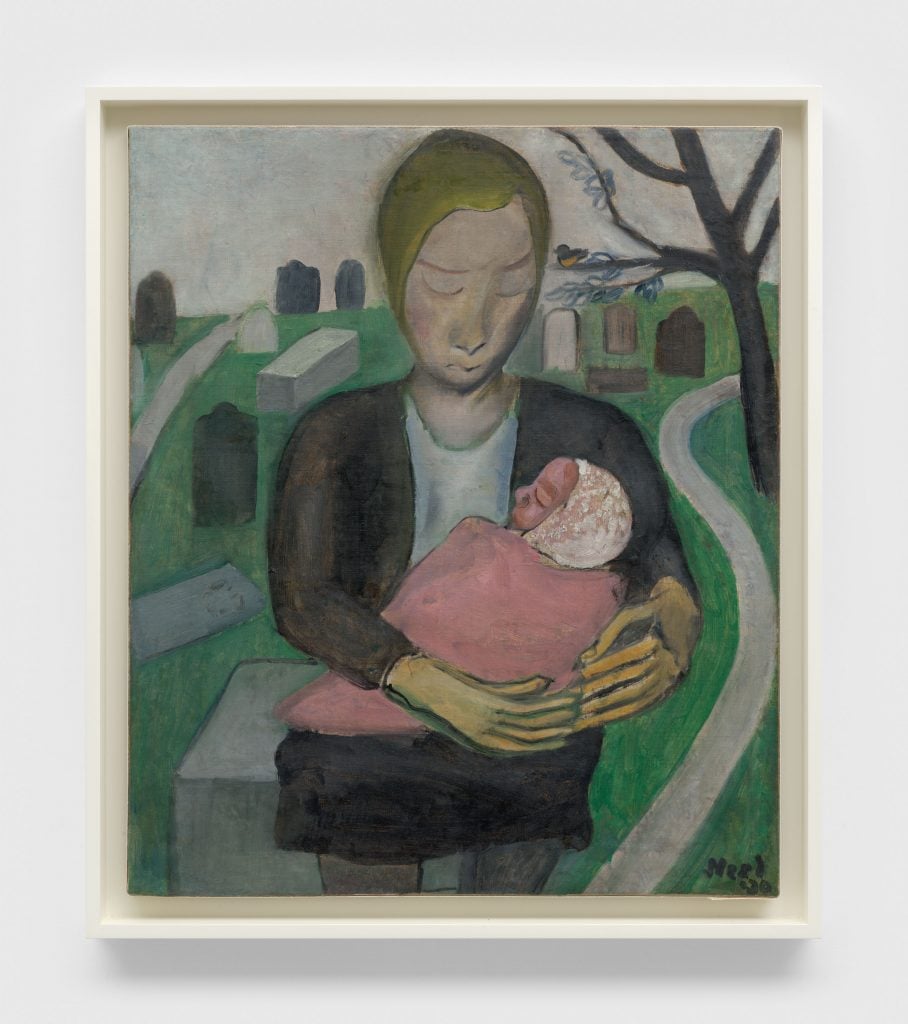
Plus, 'Portraits of Mamahood' at Chashama and more.

Sarah Cascone

Each week, we search for the most exciting and thought-provoking shows, screenings, and events, both digitally and in-person in the New York area. See our picks from around the world below. (Times are all ET unless otherwise noted.)
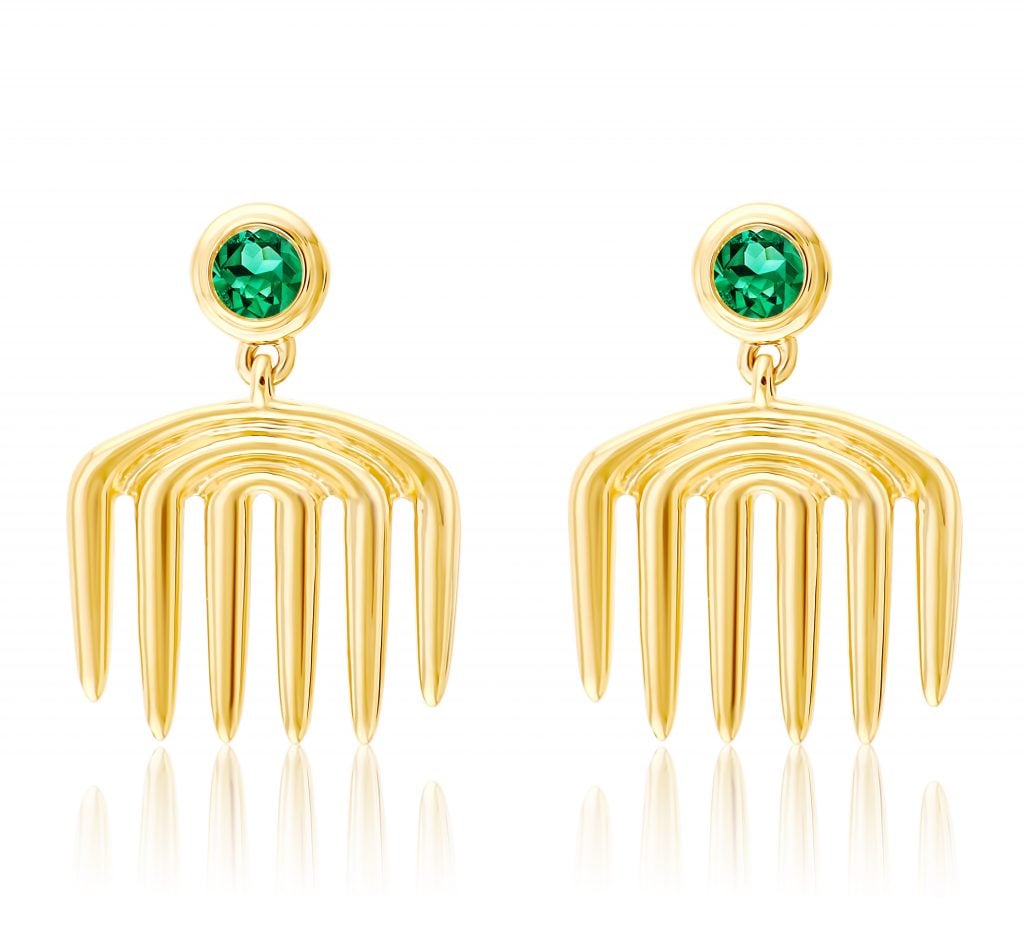
For Almasika’s Sagesse collection, jeweler Catherine Sarr has reimagined cross-cultural motifs as contemporary talismans, like these 18-karat gold and tsavorite “Vici” earrings ($13,500). Courtesy of Almasika, Sotheby’s.
1. “Brilliant and Black: A Jewelry Renaissance” at Sotheby’s, New York
“Jewelry artists of African descent have been largely ignored in favor of ‘African Inspired’ design over the last century, despite the fact that so many of the resources to make jewelry come from the continent,” said Melanie Grant in a statement. The author of Coveted: Art and Innovation in High Jewelry has partnered with Sotheby’s to spotlight 21 Black jewelry designers from around the world. The first-of-its-kind selling exhibition features more than 60 items, from ca. 1950 to present, priced from $1,500 to $1 million. Expect West Indian–inspired brass-copper bracelets and necklace belts from the late Winifred Mason Chenet (credited as the first commercial Black jeweler in the U.S.), artist Rashid Johnson’s gold and titanium signet rings (part of his limited-edition Lizworks series, “Anxious Men”), and many pieces specially created for the occasion.
Location: Sotheby’s New York, 1334 York Avenue (online at Sotheby’s Buy Now online marketplace through October 10)
Price: Free
Time: Monday–Saturday 10 a.m.–5 p.m.; Sunday 1 p.m.–5p.m.
—Christine Ajudua

Film Still from Wallace Berman’s Aleph (1956–66). 16mm film transferred to video (black and white, silent) Courtesy of The Film-Makers’ Cooperative/The New American Cinema Group Inc.
2. A Screening of Wallace Berman’s Film Aleph at Totah, New York
Wallace “Wally” Berman was one of the most influential artists in the post-war California art scene, as well as one of the most experimental, working across film, assemblage, and collage. His eight-minute silent film Aleph combines all aspects of his practice. Made over the course of a decade (1956–66), the film was recently transferred to 16mm film by filmmaker Stan Brakhage who calls the work “the only true envisionment of the sixties that I know.” After a screening of the film, Tosh Berman, the artist’s son and author of the book Tosh: Growing Up in Wallace Berman’s World, will speak with filmmaker Andrew Lampert in a conversation moderated by Anne Waldman. The screening coincides with the exhibition “Wallace Berman: Off the Grid” at TOTAH Gallery.
Location: Totah, 183 Stanton Street, New York
Price: Free, RSVP required
Time: 5:00–6:30 p.m.
—Katie White
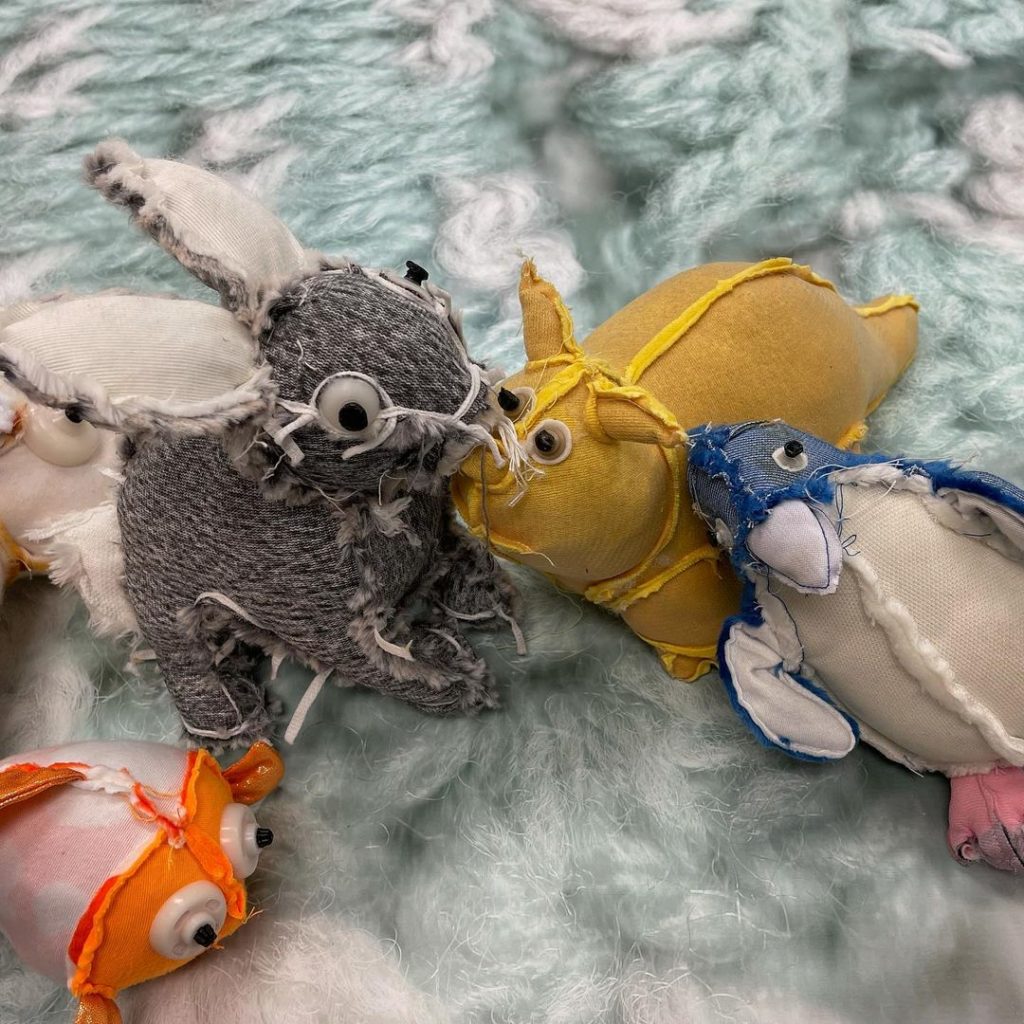
Aimee Gilmore’s stuffed animal sculptures in “We Speak Our Truth: Portraits of Mamahood.” Photo courtesy of the artist.
3. “We Speak Our Truth: Portraits of Mamahood” at Chashama, New York
There’s no question that the pandemic has disproportionately affected many mothers who were forced to balance child care, education, household tasks, and their regular jobs—and those challenges have been very real for artist mothers over the last 18 months. Kate Fauvell wanted to celebrate the work of her fellow artist mothers in curating this group show featuring her own photo collage paintings along with pieces by Las Hermanas Iglesias, Tabitha Soren, Jaishri Abichandani, Amanda Kates, and Aimee Gilmore.
Location: Chashama, 320 West 23rd Street, New York
Price: Free
Time: 4 p.m.–7 p.m.; Saturday, 12 p.m.–5 p.m.
—Sarah Cascone
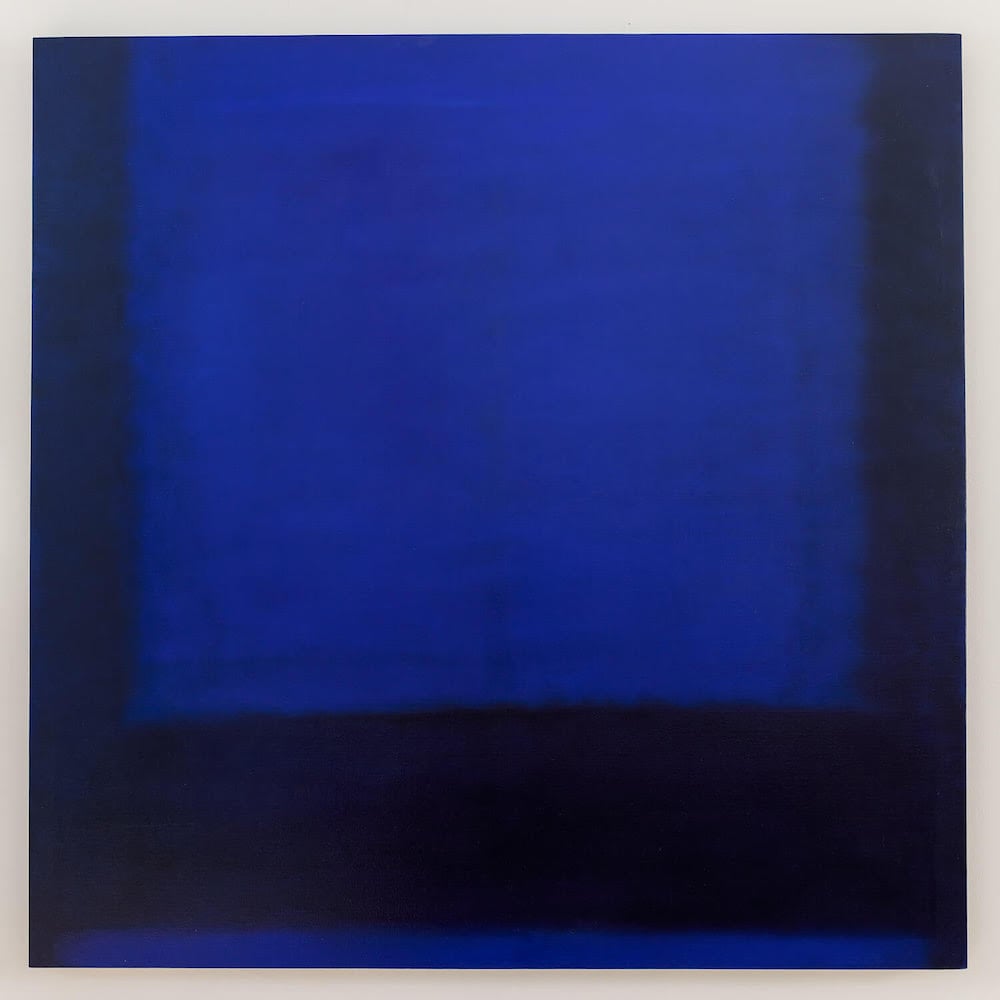
Todd Williamson, Lost in Transition (2021). Image courtesy the artist and Georges Berges Gallery.
4. “Todd Williamson: The Only Way Out is Through” at Georges Berges Gallery, New York
One of the plethora of shows that opened last Thursday to coincide with Armory VIP viewing day, this exhibition reflects Los Angeles-based Williamson’s experimentation over the course of several months, during which he developed a unique application process for oil painting—wiping, sanding, scraping, and dry-brushing, over and over again, until a level of opacity and subtle color variation is achieved. In these multi-layered works, colors float on the surface, broken by small squares of deeper colors that are then streaked through with a darker paint. The works serve as a metaphor for the challenges and upheavals that many have dealt with amid the past year and a half of pandemic-related anxiety and lockdown-induced isolation.
Location: Georges Bergès Gallery 462 West Broadway, New York
Price: Free
Time: Monday–Wednesday, 11 a.m.–6 p.m.; Thursday–Sunday, 11 a.m.–7 p.m.
—Eileen Kinsella
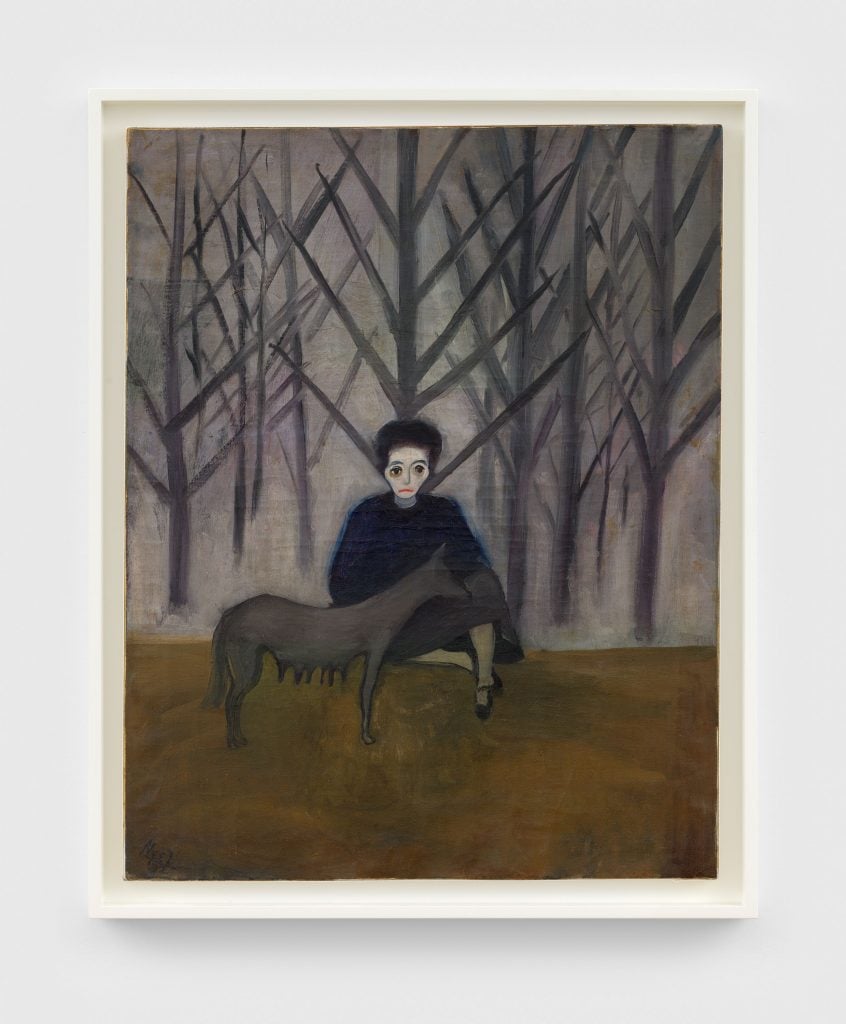
Alice Neel, Nadya and the Wolf (1932). Photo courtesy of David Zwirner Gallery.
5. “Alice Neel: The Early Years” at David Zwirner, New York
On the heels of Alice Neel’s acclaimed Met retrospective, David Zwirner presents an impressive selection of her early work, from street scenes of New York City to the riveting portraiture for which she is best known. Marking the passage of time and Neel’s artistic progression in particular is a double portrait of her two sons as children at Christmas, and two canvases depicting them as grown men.
Location: David Zwirner, 537 West 20th Street, New York
Price: Free
Time: Tuesday–Thursday and Saturday, 10 a.m.–6 p.m.; Friday, 10 a.m.–8 p.m.
—Sarah Cascone
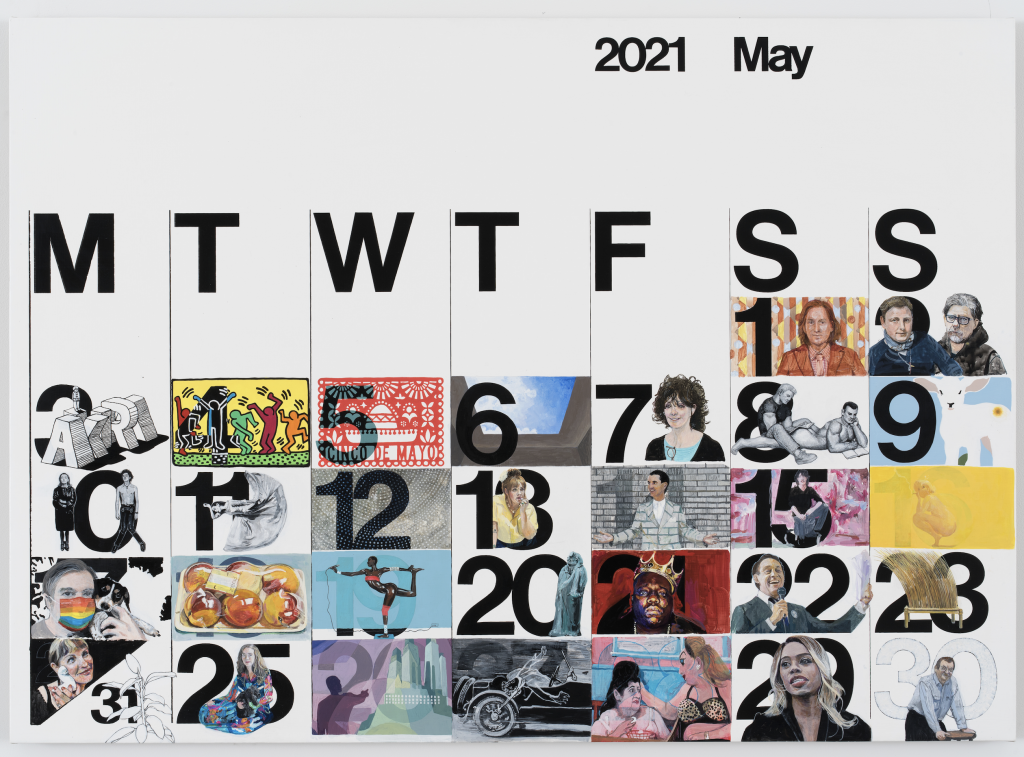
Rob Pruitt, Studio Calendar 2020 (2020). Courtesy of the artist and 303 Gallery.
6. “Rob Pruitt: These Are The Days Of Our Lives” at 303 Gallery, New York
It’s hard to imagine ever wanting to relive a lot of the last two years, but there’s no question that from the mind-blitzing tweets of Trump’s waning days in office to the emergence of COVID-19, the Black Lives Matter protests, the toppling of Confederate statues, the election of President Biden, and the cataclysmic events of January 6—these are defining moments. Artist Rob Pruitt’s paintings reflecting on these milestones are on view at 303 in a new show that explores the micro and macro aspects of living life inside a grid. The artist’s Gradient paintings, from a series based on photographs of the California desert, are like screenshots from Instagram, while cut-out Mask paintings allude to the now-ubiquitous accessory as well as the conceptual aspect of putting on different acts for different audiences. Another new series was informed by the artist’s mother’s experience slipping into dementia and compulsive hoarding behaviors, and are more introspective reflections on accumulating years, objects, relationships, and memories.
Location: 303 Gallery, 555 West 21st Street, New York
Price: Free
Time: Tuesday through Saturday, 10 a.m.–6 p.m.
—Caroline Goldstein
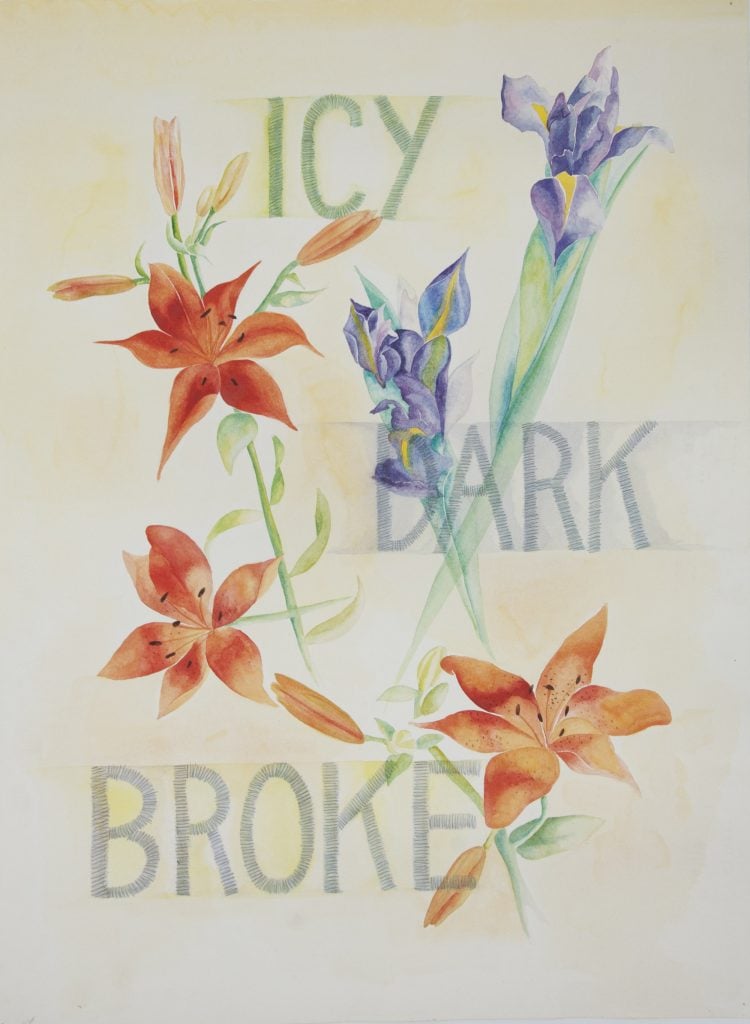
Rosemary Mayer, Icy Dark Broke (1983) at the Swiss Institute. Photo courtesy of A.I.R. Gallery, New York.
7. “Rosemary Mayer: Ways of Attaching” at Swiss Institute
This is the first institutional survey of American artist Rosemary Mayer (1943–2014) and it shines a well-deserved light on an artist who flew under the radar for decades but is getting wider recognition now. Work in the show ranges from early conceptual experiments of the late 1960s to textile sculptures and drawings made in the early 1970s, before she began focusing on the proposals for performances and temporary monuments that she made between 1977-1982. The show highlights the artist’s formal interest in draping, knotting, and tethering.
Mayer was born in Brooklyn and lived in New York City all her life. The earliest works included in the show reflect her meticulous record-keeping of small everyday occurrences. Included are several contributions to the journal 0 To 9 (1967-9), edited by her sister, the poet Bernadette Mayer, and her then-husband, the artist Vito Acconci.
Location: Swiss Institute, 38 St Marks Place, New York
Price: Free
Time: Wednesday–Friday 2-8 p.m.; Saturday 12-8 p.m.; Sunday 12–6 p.m.; Monday–Tuesday closed
—Eileen Kinsella
